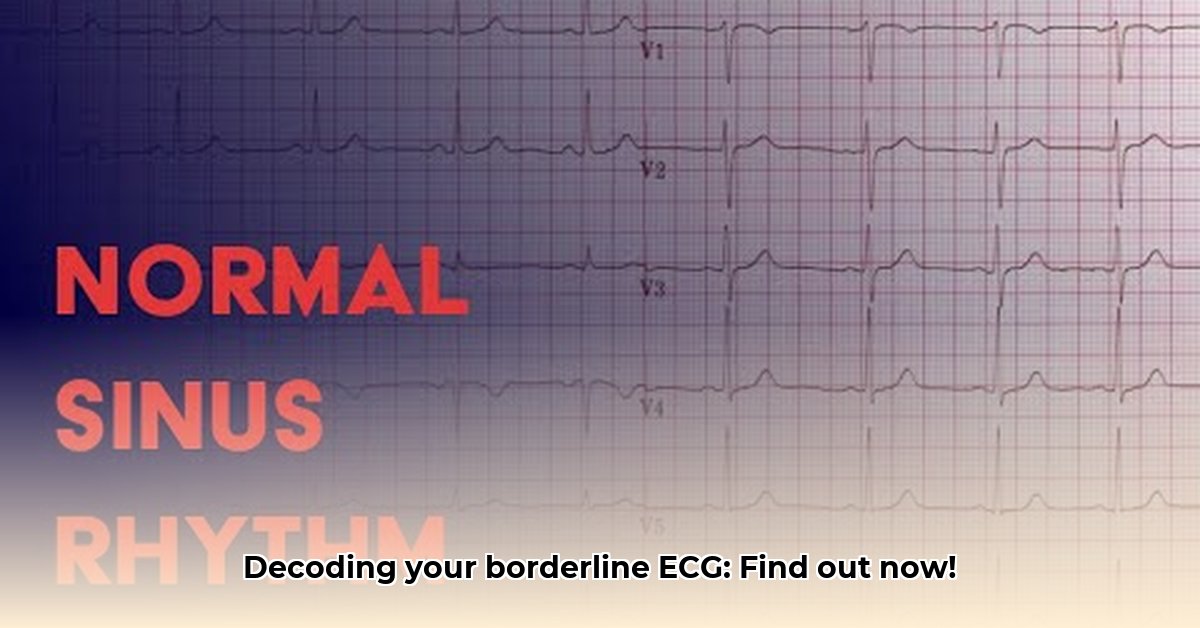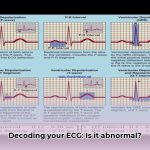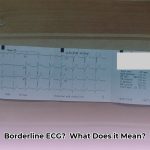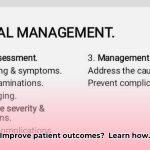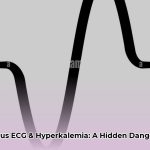Getting a “borderline” result on your ECG can be a little worrying. It sounds like something’s not quite right, but what does it actually mean? This informational article will explain what a borderline ECG is in simple terms, what might cause it, and what you should do next. We’ll explore how doctors interpret these results and help you understand what actions you can take to look after your heart health. Whether you’re a patient with questions, a healthcare provider wanting a quick refresher, or just curious, we’ll make this easy to understand. For more on abnormal ECGs, see this helpful resource: Abnormal ECG meanings.
Understanding Borderline ECG Results and Heart Health
So, you got your electrocardiogram (ECG) results back, and you see the word “borderline.” What does that even mean? Don’t worry; it’s not as scary as it sounds. A “borderline” ECG simply means your heart’s electrical activity, as measured on the test, showed some readings that are slightly outside the perfectly normal range, but not completely abnormal either. It’s like finding a slightly loose tile on your floor – not a major problem, but it needs checking out. It’s not a diagnosis itself, but a sign that your doctor might want to do some more tests for a complete cardiac evaluation.
Decoding the Fuzzy “Borderline” in Electrocardiograms
The term “borderline” in ECG reports can feel a bit vague. There’s no single, universally accepted definition. It means your ECG showed subtle differences from the typical patterns of your heart’s electrical signals. These small variations might be in the ST segment, QT interval, or T waves – all parts of your heart’s rhythm pattern.
Why the fuzziness? Because everyone’s heart rhythm is a bit different, and a small change might be nothing for one person but important for another. Factors like age, sex, and overall health can all affect what’s considered “normal” for an ECG.
Your doctor will use their medical expertise, along with your personal health history and any symptoms you’re experiencing, to figure out what the borderline reading actually means. It’s like a puzzle where many pieces need to fit together.
Possible Reasons for a Borderline ECG Reading
Let’s be clear: a borderline ECG doesn’t automatically scream “heart attack!” But it does suggest the need for further investigation, as it could hint at several possibilities:
- Totally Harmless Blips: Sometimes, these minor irregularities are completely insignificant. Everyday things like stress, being dehydrated, recent exercise, or the side effects of certain medications can cause minor changes in your heart’s rhythm. Even the way the electrodes were placed on your body can influence the results.
- Early Warning Signs: In other cases, however, a borderline ECG might be a subtle tip-off that there’s a slightly bigger issue brewing, such as the early stages of coronary artery disease (where your heart’s arteries are narrowed), high blood pressure, or problems with your body’s electrolyte balance. Catching these early is really important.
- The “Need More Info” Sign: Often, a borderline result just means the doctor needs more information to get a clear understanding of what’s going on. Think of it as a detective needing more clues.
Actionable Steps After a Borderline ECG Diagnosis
Getting a borderline ECG shouldn’t send you into a panic, but it does require some action. Here’s a recommended game plan:
1. Talk to Your Doctor: Schedule a follow-up visit to chat about your results. “It’s a collaborative effort, so ask questions; understanding your own health is critical,” states the experts. Your doctor will look at your medical history, discuss any medications you are taking, and assess any symptoms you’re experiencing. Be prepared to answer questions about your lifestyle, including diet, exercise habits, and stress levels.
2. Focus on Healthy Habits: While you’re waiting for further tests, try to focus on the basics of a healthy lifestyle. This includes eating a balanced diet, rich in fruits, vegetables, and lean protein; exercising regularly (aim for at least 150 minutes of moderate-intensity exercise per week); managing stress (easier said than done, but try techniques like meditation, yoga, or spending time in nature); limiting caffeine and alcohol intake; and getting enough sleep (7-8 hours per night). These healthy habits can support your overall health, which includes your heart. A study published in the Journal of the American College of Cardiology found that regular exercise can reduce your risk of heart disease by as much as 30-40%
3. More Tests, Maybe: To get a more complete picture, your doctor may order more tests. These might include:
- Another ECG: Sometimes, a simple repeat test is all it takes to rule out any temporary factors that might have influenced the initial reading.
- Holter Monitor: This is like a portable ECG you wear for 24-48 hours, or even longer, recording your heart rhythm continuously. This can help detect abnormalities that might not show up on a standard ECG.
- Event Recorder: Similar to a Holter monitor, but worn for a longer period (up to 30 days). You activate it when you experience symptoms.
- Echocardiogram: This is an ultrasound of your heart, which provides a detailed image of its structure and function. It can help identify any structural abnormalities that might be affecting your heart’s electrical activity.
- Stress Test: This helps doctors assess how your heart responds to exercise. It can reveal problems with blood flow to the heart muscle that might not be apparent at rest. There are different types of stress tests, including those performed on a treadmill or with medication.
- Blood Tests: These will check for things like electrolyte imbalances (potassium, magnesium, calcium), thyroid function, and markers of heart damage.
4. Medication Review: Be sure to provide your doctor with a complete list of all medications you are taking, including over-the-counter drugs and supplements. Some medications can affect your heart rhythm and contribute to a borderline ECG. Your doctor may need to adjust your dosages or switch you to a different medication.
5. Patience is Key: Getting to a firm diagnosis can take time. Be patient, proactive, and keep communicating with your healthcare team.
Factors Affecting ECG Readings: A Risk Overview
Many things influence ECG readings – some you can control, some you can’t. Knowing these factors can be useful, especially if your ECG showed borderline results to determine the need for prompt medical attention.
| Factor | Potential Impact | What You Can Do |
|---|---|---|
| Borderline ECG Result | Moderate concern | Further testing is advised. |
| Underlying Heart Condition | Significant concern | Prompt medical attention and treatment are essential. |
| Lifestyle (Stress, Diet) | Mild to Moderate concern | Manage stress, eat a balanced diet, and exercise. |
| Medications | Mild to Moderate concern | Discuss medication side effects with your doctor. |
| Electrolyte Imbalances | Mild to Moderate concern | Blood tests can detect and help correct imbalances. |
| Technical Factors (Electrode placement) | Mild concern | Ensure proper electrode placement during ECG testing. |
| Age | Can influence interpretation | Normal variations can differ by age group. |
Remember, a borderline ECG is not a diagnosis. It’s a signal to learn more. By working with your doctor and following their recommendations, you’ll gain a clearer picture of your heart health and peace of mind. Ongoing research continues to refine our understanding of ECG interpretations, so the understanding of borderline results may evolve over time. Organizations like the American Heart Association and the American College of Cardiology offer resources and guidelines for healthcare professionals.
How to Interpret Borderline ECG Results and Determine Next Steps
What does a “borderline” ECG mean? It means your electrocardiogram showed some minor variations from the perfectly normal pattern. While it doesn’t automatically mean you have a serious heart problem, it does warrant additional examination. Think of it like a flickering lightbulb – it’s not completely out, but it needs checking to avoid a bigger issue.
Key Takeaways:
- A borderline ECG isn’t a diagnosis but a signal for further investigation, which is crucial for proactive heart health.
- It suggests subtle heart rhythm irregularities needing more tests, especially from a cardiologist.
- Lifestyle factors and electrolyte imbalances can affect ECG readings, requiring lifestyle adjustments.
Understanding What’s “Borderline” on Your EKG
So, how to interpret borderline ECG results and determine next steps? That’s where the nuance comes in. ECGs measure your heart’s electrical activity. Doctors look for specific patterns that indicate potential problems. A borderline result shows subtle deviations from these normal patterns, making it tricky to definitively diagnose anything. It could be nothing, or it could signal something requiring attention. The ECG is a snapshot in time, and factors present at the moment of the test can influence the outcome.
Several factors can create borderline results. Stress, anxiety, caffeine, dehydration, and even some medications can temporarily alter your heart rhythm, leading to a reading that’s not quite perfect. Electrolyte imbalances, like low potassium or magnesium, can also skew your results. In some cases, a borderline reading might be due to technical issues with the ECG machine or improper electrode placement.
Evaluating a Borderline Electrocardiogram (ECG)
Don’t
- How Did Charles F. Brush Discover Wind Energy Tech? - November 19, 2025
- Wind Energy Vertical: Weighing the Pros and Cons of Wind Power - November 16, 2025
- How Much Energy Does a Wind Turbine Actually Create? - November 14, 2025
